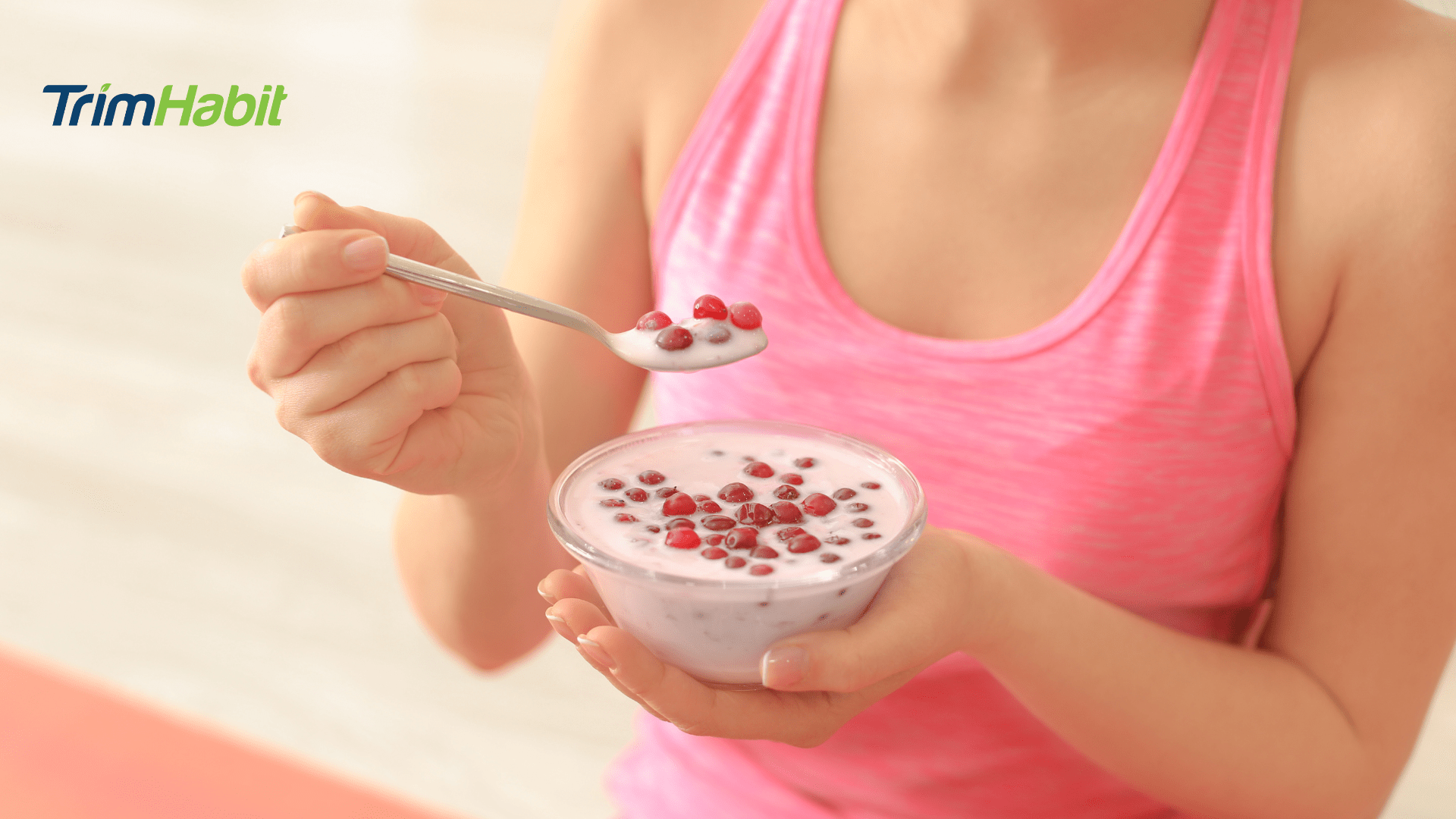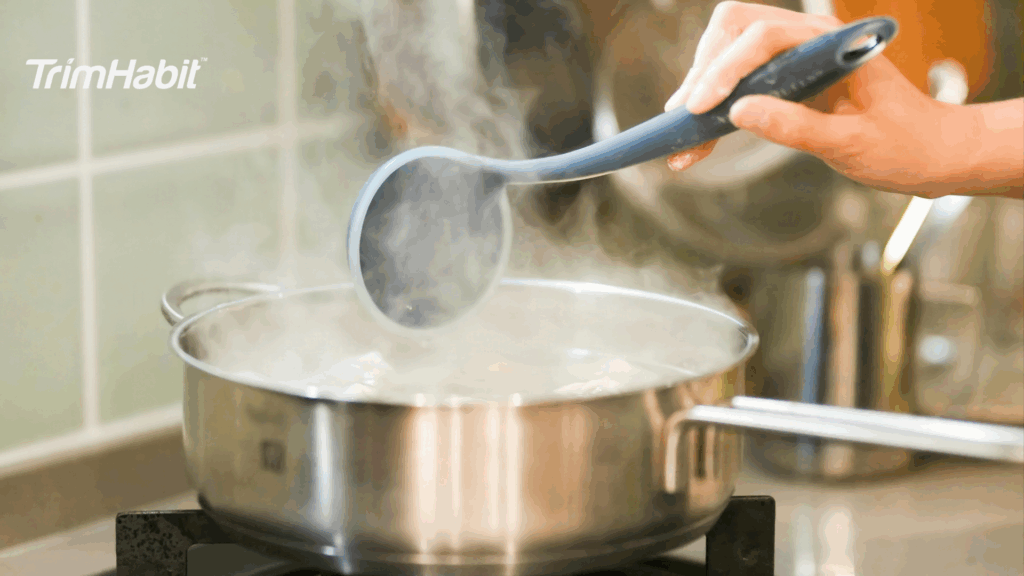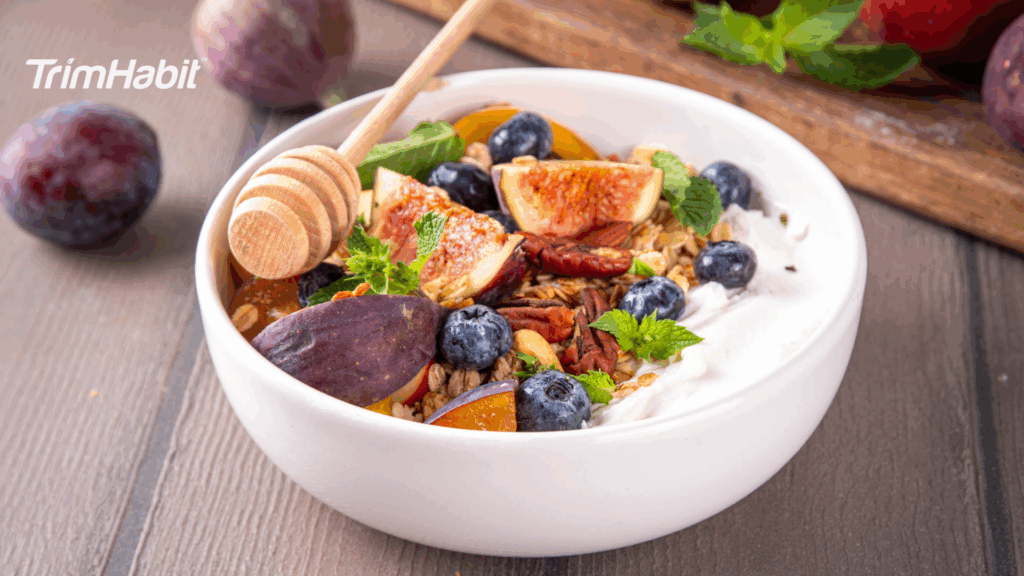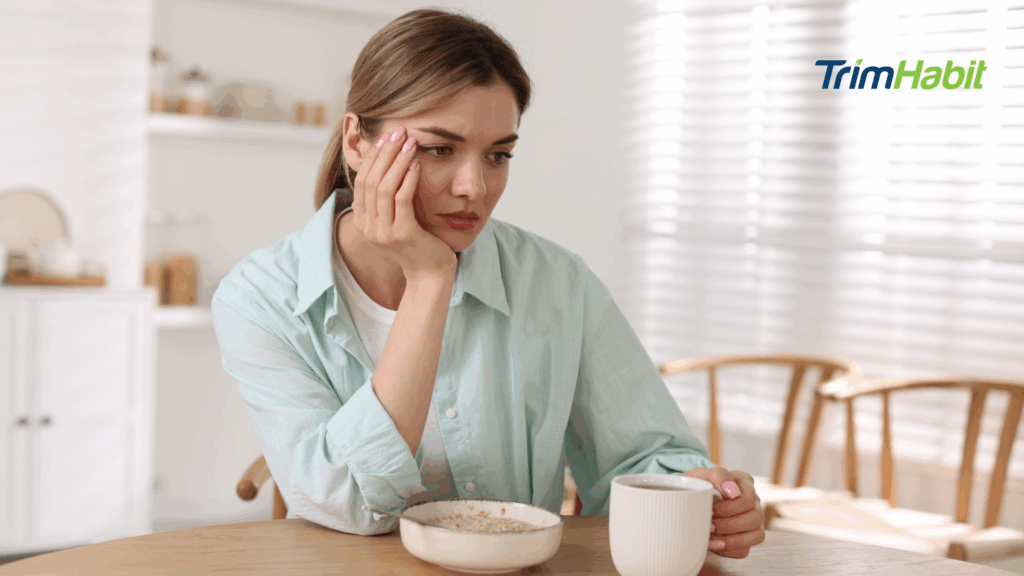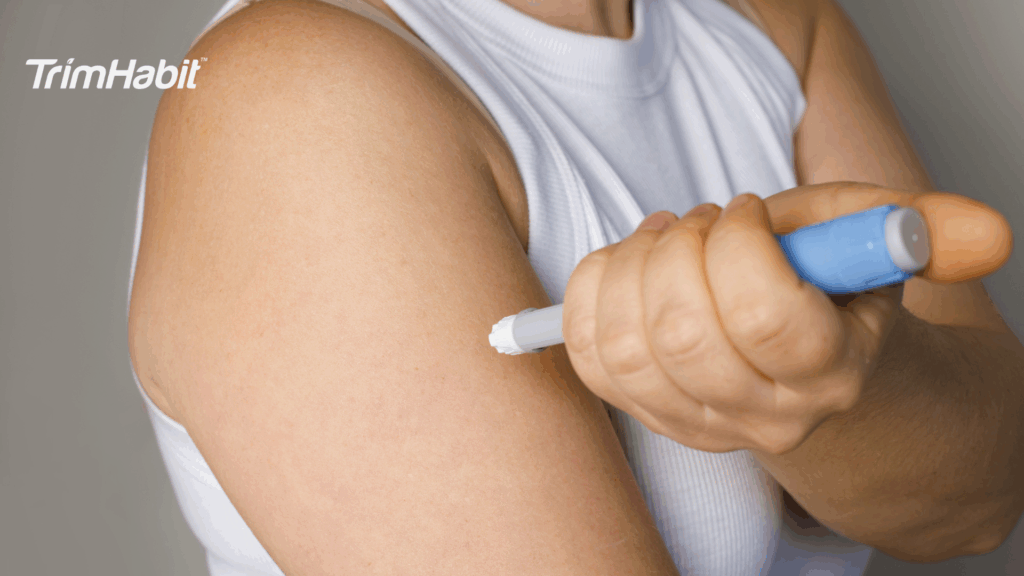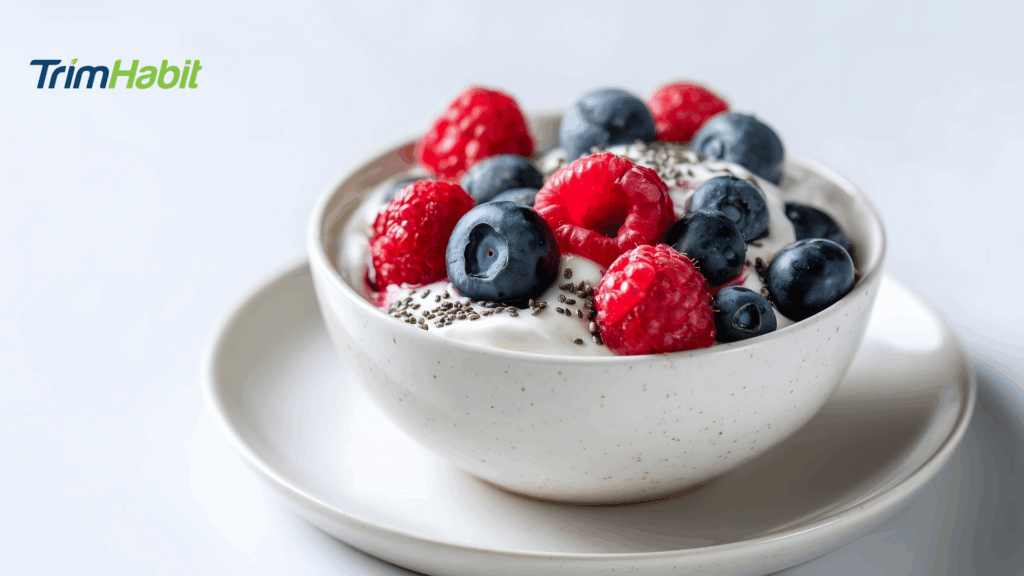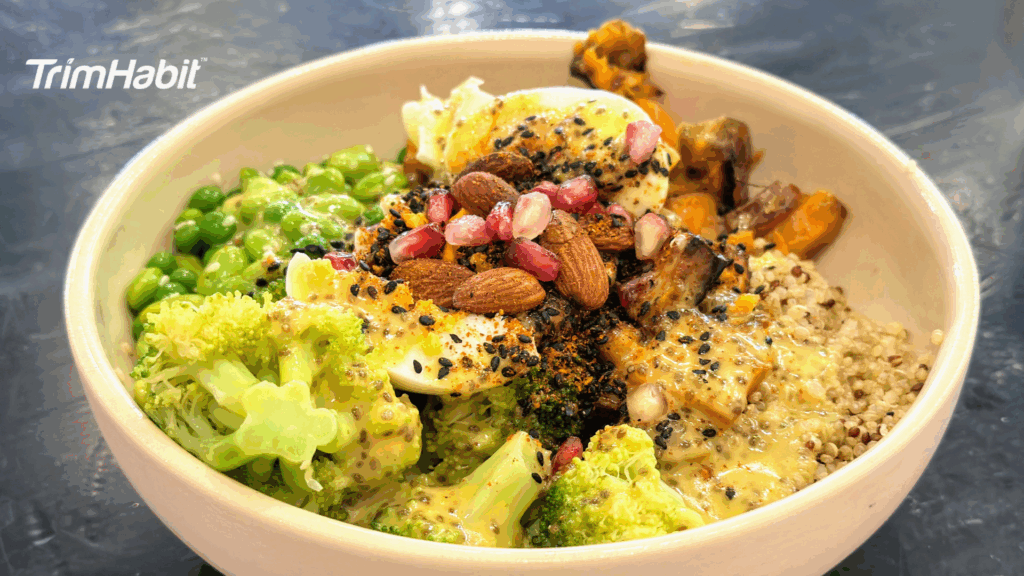When you start taking semaglutide, your appetite and digestion shift in ways that can help you make real progress with your health and fitness. Exercise becomes a more meaningful part of your day, and what you eat afterward plays a major role in how well your body adapts.
Choosing post-workout meals that complement semaglutide allows you to recover properly, manage your blood sugar, and sustain lean muscle mass while supporting your weight loss journey. What you eat after training determines how your muscles rebuild and how efficiently your body uses nutrients to maintain energy and strength.
Because semaglutide works through appetite regulation, it can make it easier to skip meals or underestimate what your body needs after exercise. This is where deliberate meal planning becomes essential.
Your post-workout meal should replace the nutrients used during exercise and prepare your body for continued fat loss, recovery, and long term weight management. With the right mix of macronutrients, you can enhance nutrient absorption, stabilize blood sugar, and reduce fatigue, helping you stay consistent with your workouts and your healthy diet.
How Semaglutide Influences Post-Workout Nutrition
Semaglutide functions by mimicking a hormone called GLP-1, which regulates appetite and helps control blood sugar levels1. This natural effect leads to appetite suppression that makes it easier to consume fewer calories throughout the day.
However, after exercise, your muscles are still in need of fuel and repair. Without sufficient nutrients, recovery slows, and you may lose valuable muscle mass along with body fat. To avoid that, you need balanced meals that include lean proteins, complex carbohydrates, and healthy fats soon after finishing a workout.
Because your calorie intake might already be lower while taking semaglutide, post-exercise nutrition should be nutrient-dense rather than heavy. Foods rich in vitamins, minerals, and fiber will help replenish glycogen stores without adding unnecessary calories. Consistent, moderate meals throughout the day, paired with frequent meals that fit your schedule, can support fat loss and energy levels while preventing hunger crashes.
Building A Foundation For Recovery And Strength
Your body relies on a combination of macronutrients after exercise to repair muscle fibers and restore energy. The best foods to eat in this window include high-quality proteins, slow-digesting carbohydrates, and heart-healthy fats that work together to improve recovery.
You should view these meals as an extension of your workout rather than a reward for finishing it. Each choice affects how well you rebuild tissue and regulate blood sugar control during the hours that follow.
A strong example of a balanced post-workout plate includes grilled salmon or another fatty fish served with brown rice and mixed greens drizzled with olive oil. This combination offers complete protein for muscle repair, complex carbohydrates for glycogen restoration, and unsaturated fats for hormonal balance. The result is a meal that fuels your recovery and helps you sustain lean muscle mass while promoting weight loss.
If you prefer lighter options, try Greek yogurt topped with berries and a spoonful of chia seeds. This provides protein, calcium, and fiber while satisfying your craving for something refreshing. The chia seeds add omega-3 fatty acids that enhance heart health and support digestive health. Pairing them with yogurt also assists with nutrient absorption, which is particularly useful when appetite suppression makes heavier meals less appealing.
Protein And Muscle Recovery
Adequate protein intake is the most critical factor in maintaining and building lean muscle tissue while using weight loss semaglutide. Because protein stimulates muscle protein synthesis2, it ensures that your workouts translate into strength rather than fatigue. You can obtain protein from animal or plant sources, depending on preference. Chicken breast, eggs, tofu, lentils, or fish all fit within a healthy diet and can be prepared in various ways to keep your meals interesting.
If your schedule requires convenience, a smoothie made with protein powder, a banana, and a handful of leafy greens can replace a full meal without overwhelming your digestion. The carbohydrates from fruit refill energy stores while the greens add fiber and antioxidants. Smoothies also help if you find it difficult to eat after exercise because they are easy to consume and still deliver the nutrients your body needs.
You can also combine grains and legumes for a complete protein profile. For instance, brown rice with black beans or quinoa with chickpeas makes an ideal post-workout meal for plant-based diets. These pairings provide both protein and complex carbohydrates that support energy recovery and muscle maintenance.
Carbohydrates For Glycogen Replenishment
After exercise, your muscles use stored glycogen as fuel. Replacing this source of energy helps reduce soreness and prepare your body for the next workout. Complex carbohydrates digest slowly, which helps stabilize blood sugar and reduces the likelihood of blood sugar spikes later in the day. Whole grains, starchy vegetables, and fruit offer excellent sources of sustained energy without leading to excess fat storage.
Instead of reaching for refined carbohydrates, choose nutrient-dense foods that promote steady energy. Whole-grain toast with avocado and poached eggs gives you both carbohydrates and healthy fats. The fiber from the bread and the monounsaturated fat from the avocado keep you satisfied for longer. Sweet potatoes, oats, and quinoa also serve as excellent bases for post-workout meals, helping you meet your energy needs while maintaining a balanced diet.
When you eat carbohydrates after training, combine them with lean proteins. This pairing slows digestion slightly and promotes better glycogen replenishment. It also prevents your blood sugar from rising too rapidly, which supports effective weight management and helps maintain consistent energy levels through the day.
Healthy Fats And Hormonal Support
Including fat in your post-workout meal helps with nutrient absorption and hormonal function. Healthy fats are essential for cell repair, controlling inflammation, and producing hormones that regulate metabolism. Prioritize sources like olive oil, nuts, avocado, seeds, and fatty fish instead of fried foods or processed snacks that contain unhealthy fats.
Avoid foods high in saturated and trans fats, as these interfere with blood flow and can slow recovery. Choosing heart healthy fats ensures your body continues to function efficiently even as you reduce calorie intake. These fats also improve the texture and flavor of your meals, which helps you stay consistent with dietary adjustments.
Hydration And Electrolyte Balance
Rehydration after exercise is as important as eating the right foods. You lose fluids and electrolytes through sweat, and replacing them supports muscle contraction and recovery. Water should always come first, but if your workout was intense or lasted more than an hour, a light electrolyte drink can help restore sodium and potassium levels. Pairing hydration with a meal rich in whole foods also helps your body reestablish balance without depending on sugary sports beverages.
When seasoning your meals, use natural herbs, citrus, or low sodium soy sauce to enhance flavor without increasing sodium excessively. Overconsumption of sodium can lead to bloating, which some people already experience while taking semaglutide. Flavoring your meals naturally keeps them satisfying without discomfort.
Sample Post-Workout Meals That Complement Semaglutide
Breakfast (Post-Morning Workout)
- Greek yogurt with chia seeds, mixed greens smoothie, and a slice of whole grain toast
- Scrambled eggs with spinach and low-sodium soy sauce, served with brown rice
- Protein powder shake blended with leafy greens, banana, and olive oil drizzle
- Oatmeal topped with chia seeds, blueberries, and a spoon of Greek yogurt
- Whole-grain toast with avocado and a side of boiled eggs
Lunch (Post-Midday Workout)
- Grilled chicken breast with brown rice and mixed greens salad
- Tuna and olive oil salad with leafy greens and whole grain toast
- Stir-fried tofu with low-sodium soy sauce and steamed vegetables
- Salmon fillet with quinoa and roasted vegetables
- Shrimp and brown rice bowl with mixed greens and sesame seeds
Snack (Light Recovery Option)
- Greek yogurt with chia seeds and sliced strawberries
- Protein shake made with protein powder and almond milk
- Handful of nuts with an apple and a drizzle of olive oil
- Rice cakes topped with hummus and cucumber slices
- Smoothie with leafy greens, chia seeds, and Greek yogurt
Dinner (Post-Evening Workout)
- Grilled fatty fish with mixed greens and brown rice
- Turkey breast with whole grains and roasted sweet potatoes
- Stir-fried lean beef with low-sodium soy sauce and steamed broccoli
- Baked chicken thighs with quinoa and mixed vegetables
- Tofu and vegetable bowl with olive oil dressing and a side of leafy greens
Late-Night Light Meals (If You Trained Late)
- Greek yogurt with chia seeds and a few almonds
- Scrambled egg whites with spinach and olive oil
- Protein powder shake with unsweetened almond milk
- Cottage cheese with sliced cucumber and a sprinkle of chia seeds
- Steamed white fish with mixed greens and olive oil drizzle
Meal Examples For Different Exercise Types
The ideal post-workout meal varies based on the type of training you do. After strength training, your body benefits most from meals high in protein and moderate in carbohydrates. Grilled chicken with quinoa and mixed greens provides amino acids for muscle repair and complex carbs for recovery.
For endurance exercise, prioritize carbohydrates to replenish glycogen stores. A bowl of oatmeal topped with sliced banana, Greek yogurt, and a drizzle of olive oil delivers a perfect balance of nutrients. If you prefer savory options, brown rice with tofu and sautéed spinach offers steady energy without heaviness.
If you engage in light activities such as yoga or stretching, you may need smaller meals but should still focus on balance. A smoothie with protein powder, spinach, and a handful of berries works well. You can also enjoy whole grain toast with almond butter for a satisfying yet moderate snack that supports recovery without excess calories.
Avoiding Setbacks Through Smart Food Choices
Consistency with food choices ensures your diet supports your effort in the gym. While it is normal to crave comfort after exercise, turning to processed foods filled with empty calories can stall progress. These foods add calories without essential nutrients, interfere with blood sugar control, and can lead to fatigue or stomach pain later.
Fried foods and sugary treats may seem harmless occasionally, but they often disrupt your metabolism and limit the benefits of combining semaglutide with regular exercise. Instead, aim for clean ingredients that nourish and replenish your body. Cooking at home also helps you track what goes into your meals, making it easier to stay within your calorie range while meeting your nutritional needs.
Managing Appetite And Emotional Eating
Appetite suppression can make post-workout meals feel unnecessary, but your body still needs nutrients to recover. Try to eat slowly and focus on texture, flavor, and temperature to help you sense fullness accurately. If you struggle with emotional eating or inconsistent hunger, schedule your meals ahead of time to create structure. Keeping a log of your food intake can also make mindful eating practices easier to follow.
If appetite remains low after workouts, smaller but more frequent meals can help you meet your nutritional requirements without feeling too full. Smoothies, soups, and light salads with protein-rich toppings allow you to nourish your body while adapting to the effects of semaglutide.
Supporting Digestive And Metabolic Health
Semaglutide slows gastric emptying, which helps regulate appetite but can also cause mild stomach discomfort for some users. Choosing fiber rich foods such as vegetables, oats, and chia seeds supports digestive health and prevents constipation. Balancing fiber intake with adequate hydration also keeps digestion smooth.
Pay attention to how your stomach responds after meals. If you experience persistent stomach pain, consult your healthcare provider to discuss possible dietary adjustments. Sometimes, portion size or meal timing may need minor changes to improve comfort.
Putting It All Together
Creating post-workout meals that complement semaglutide requires balance, planning, and flexibility. Focus on healthy foods and nutrient dense meals that support muscle recovery, blood sugar stability, and fat loss.
Combine lean proteins, whole grains, and healthy fats to build meals that keep you satisfied and energized. This pattern encourages effective meal planning that supports both short-term progress and long-term weight management.
Avoid processed foods and sugary snacks that trigger blood sugar spikes. Choose whole ingredients that nourish your body and strengthen your weight loss efforts. Every plate you prepare should reflect practicality and nutrition, helping you stay consistent with a healthier lifestyle that values balance, flavor, and variety. This steady effort promotes overall health while keeping your meals enjoyable and sustainable.
As you continue combining semaglutide with regular exercise, remember that your results depend on not just your weight. You are building lasting habits that improve strength, metabolism, and stamina. Each thoughtful meal supports maintaining muscle mass, stabilizes energy, and keeps you from losing weight too quickly, which protects both health and performance.
With time and steady discipline, your diet and exercise routine will significantly enhance your progress toward effective weight management and a stronger, more resilient body.

